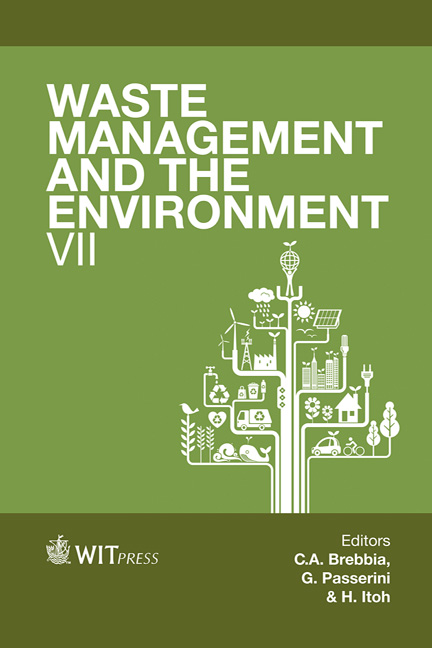The Development Of Physico-chemico Enhanced Washing For Fine-grained Soil
Price
Free (open access)
Transaction
Volume
180
Pages
8
Published
2014
Size
437 kb
Paper DOI
10.2495/WM140301
Copyright
WIT Press
Author(s)
H. Shin & J. Park
Abstract
Soil contamination problems are frequently found in many brownfield redevelopment sites. Various soil remediation technologies have been considered for the clean-up of those contaminated urban renewal sites. Soil washing remediation techniques have been applied, however, granular soils have been treated with soil washing processes since the removal efficiencies on fine-grained soil were very low in most cases. Fine-grained soil, which is considered as waste, has been disposed of at landfills. In this study, novel soil-washing equipment for fine-grained soil, using highly pressurized water to apply physical impact on the slurry and using chemical agents to promote chemical reactions, was developed. Field soil contaminated by heavy metals from an old refinery site in South Korea was investigated to evaluate the contaminant removal efficiency. Ethylene-diamine-tetraacetic acid (EDTA), a chelating agent, was selected to desorb heavy metals from the soil surface. Physical energy was applied using highly pressurized water. Three different kinds of soil-washing methods, including physical desorption, chemical solubilization, and the combined effort, were conducted in this study. The best removal efficiency was found in the combination of physical and chemical treatments at 89% of Pb, 87% of Cu and 84% of As. The test results show that the efficiency in the removal of contaminants in the soil washing system can be enhanced using a physical forcing system. Keywords: soil washing, fine-grained soil, physical impact force, surfactant, EDTA.
Keywords
soil washing, fine-grained soil, physical impact force, surfactant, EDTA.





